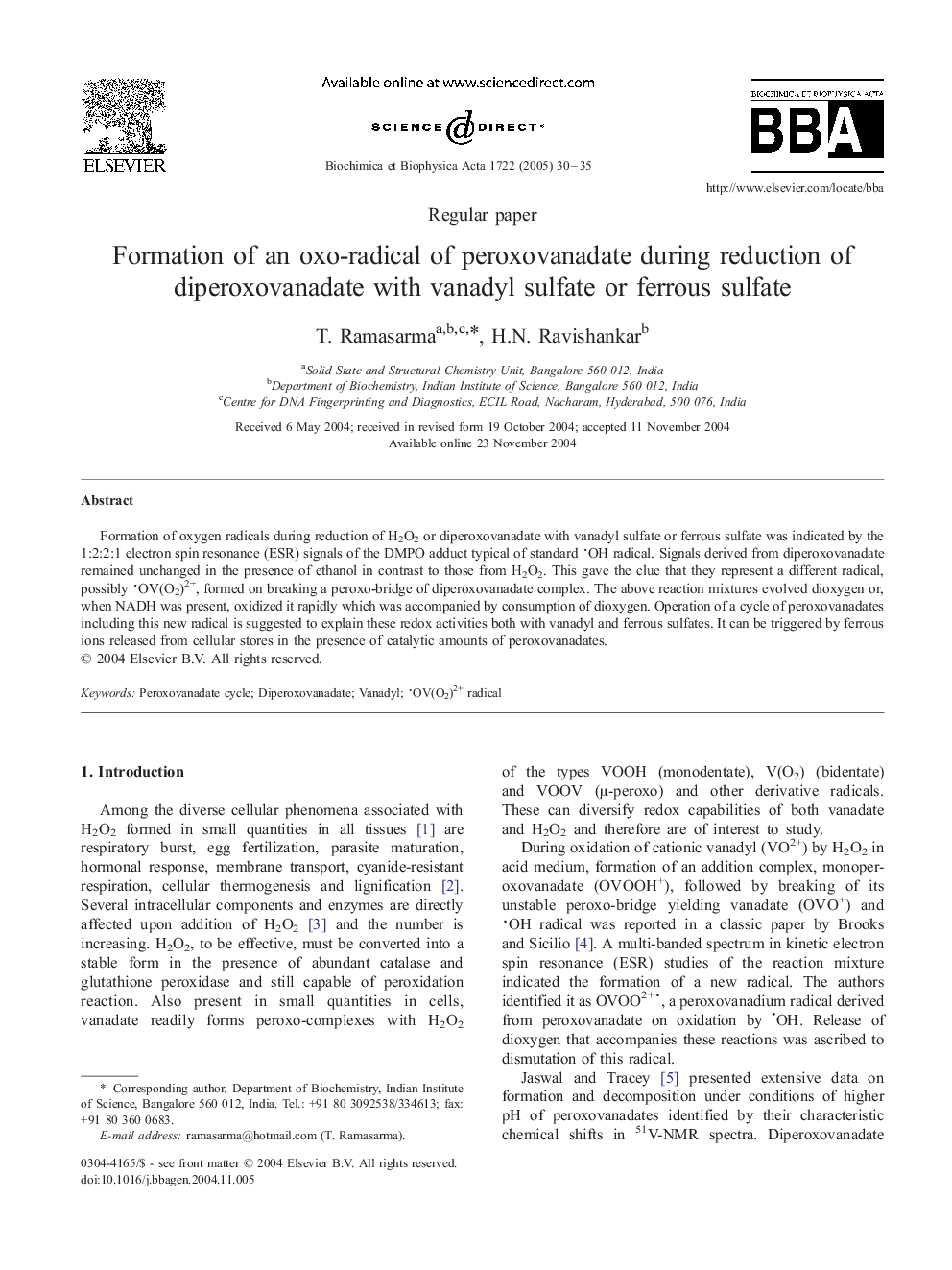| Article ID | Journal | Published Year | Pages | File Type |
|---|---|---|---|---|
| 10801111 | Biochimica et Biophysica Acta (BBA) - General Subjects | 2005 | 6 Pages |
Abstract
Formation of oxygen radicals during reduction of H2O2 or diperoxovanadate with vanadyl sulfate or ferrous sulfate was indicated by the 1:2:2:1 electron spin resonance (ESR) signals of the DMPO adduct typical of standard OH radical. Signals derived from diperoxovanadate remained unchanged in the presence of ethanol in contrast to those from H2O2. This gave the clue that they represent a different radical, possibly OV(O2)2+, formed on breaking a peroxo-bridge of diperoxovanadate complex. The above reaction mixtures evolved dioxygen or, when NADH was present, oxidized it rapidly which was accompanied by consumption of dioxygen. Operation of a cycle of peroxovanadates including this new radical is suggested to explain these redox activities both with vanadyl and ferrous sulfates. It can be triggered by ferrous ions released from cellular stores in the presence of catalytic amounts of peroxovanadates.
Keywords
Related Topics
Life Sciences
Biochemistry, Genetics and Molecular Biology
Biochemistry
Authors
T. Ramasarma, H.N. Ravishankar,
